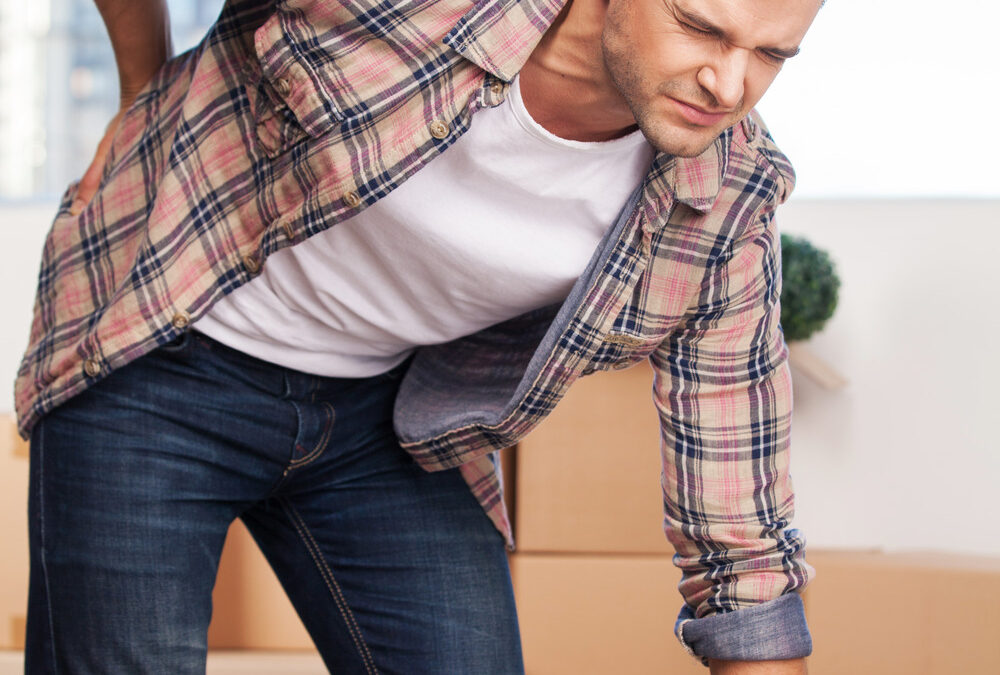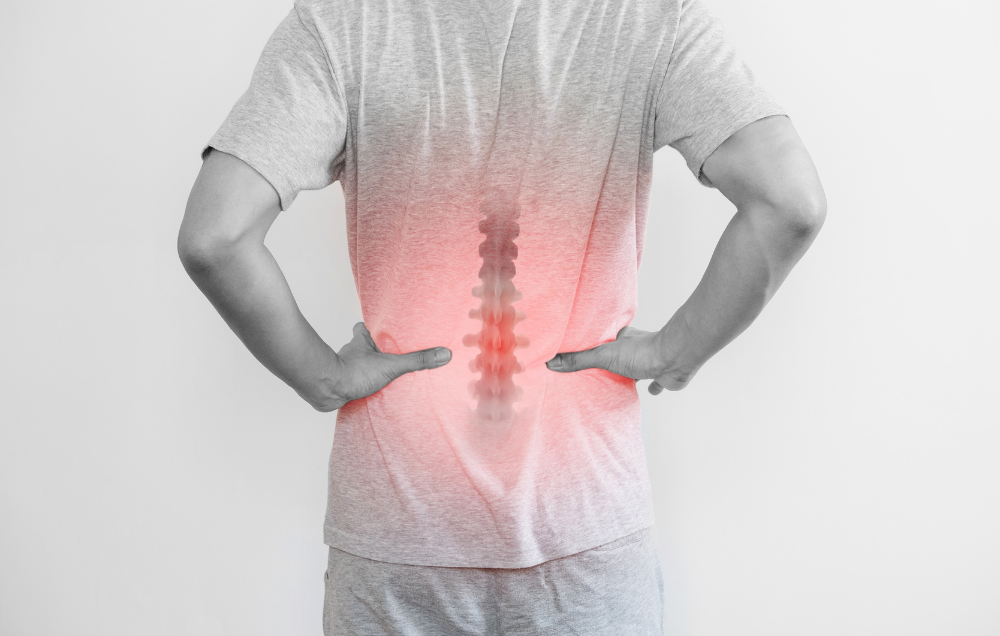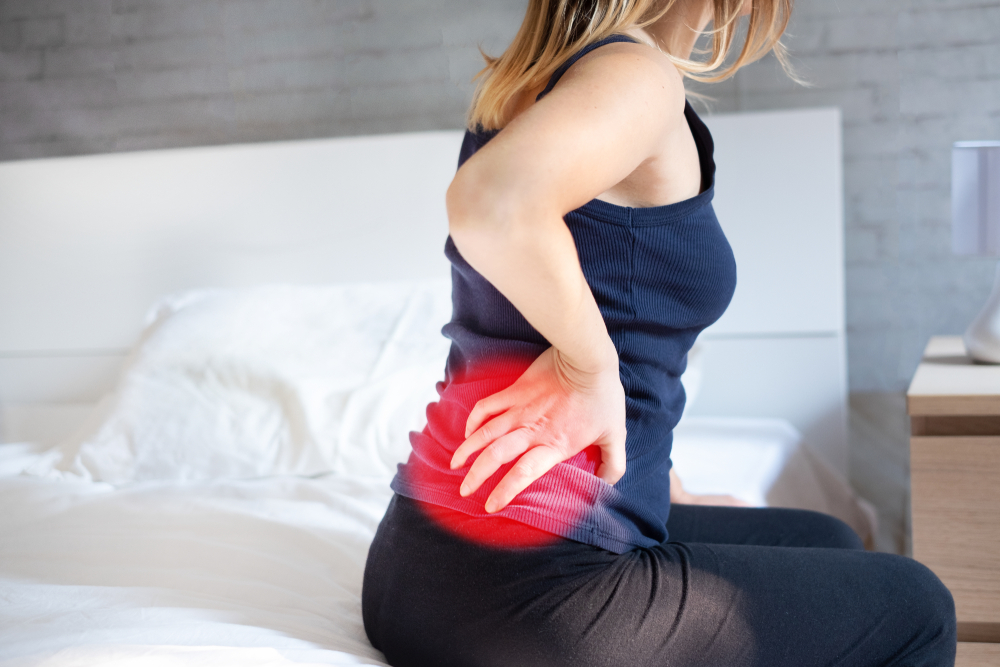Contents
Back pain and soreness can seriously limit your ability to lift heavy objects, walk long distances, turn your upper body in either direction and keep your balance. When back pain is extreme or ongoing, it can keep you from going to work or enjoying your hobbies and activities with the ones you love. Back pain is one of the most common reasons for decreased workplace productivity and workers’ compensation claims. It’s also a highly common reason for disability status.
Most back pain can be remedied at home with ice or heat, rest, and over-the-counter pain relievers. However, if your back pain is severe or accompanied by other symptoms, you should see a medical professional.
In this article, we’ll discuss some potential causes of pain in the center of the back and how physical therapy can help.
Back pain basics
Almost 40% of adults in the U.S. reported back pain in 2019, according to the CDC. Among the most likely to experience back pain were adults aged 65 and over, women, non-Hispanic white adults, and those with income below the federal poverty level. Other risk factors for back pain include excess weight, smoking, lack of exercise, and psychological conditions like depression and anxiety.
While pain in the lower back is the single leading cause of disability worldwide, pain in the center of the back or the thoracic spine is less common. The thoracic spine contains 12 vertebrae stretching between the base of the neck and the lower edge of the ribs. It provides structural support for the ribs and internal organs, and we use it every day to sit up straight, bend over, twist or reach upward.
Believe it or not, adolescent young women are among the most likely to have pain in the center of the back. Several different factors can contribute, including carrying a heavy backpack, participating in certain sports, chair height at school or strain while doing homework.
Your PT will ask you to describe the pain, any movements that make it worse and other symptoms you’re experiencing at the same time to narrow down what might be causing your back pain. Pain can be dull and aching or sharp and stabbing, and it can be constant or come and go. It can also come with numbness, tingling or difficulty breathing or radiate to other areas of your body. In extreme cases, it can cause weakness in your upper or lower limbs or loss of bladder or bowel control.
7 possible causes for pain in the center of the back
For adults with pain in the center of the back, repetitive movements, strains, or injuries from motor vehicle or sports accidents are more likely than degenerative conditions or diseases. A herniated disc in the center of your back can cause pain if it puts enough pressure on the spinal nerve. Spinal stenosis similarly puts pressure on spinal nerves, but it does so by gradually narrowing the spinal canals.
There are a few spinal conditions and cancers that could potentially cause pain in the center of the back for adults. Ankylosing spondylitis, also known as axial spondyloarthritis, can cause vertebrae to fuse together or new bone growths to form between them. Osteoarthritis can occur in the spine when the discs between your vertebrae begin to wear away, and if you have osteoporosis, you may be susceptible to stress fractures.
The following are all potential causes of pain in the center of the back:
- Poor posture.
- Carrying a heavy bag or backpack.
- Herniated disc.
- Injury from muscle stress, strain or injury .
- Stenosis.
- Ankylosing spondylitis, also known as axial spondyloarthritis.
- Osteoarthritis.
How physical therapy can help
A physical therapist can help relieve pain in the center of your back using a combination of manual techniques, exercises, aquatic therapy, spinal decompression and other treatments.
- Exercises — You may be familiar with some yoga poses that are great for stretching your back out, like cat and cow flexes, child’s pose, cobra, or seated twists.
- Aquatic therapy — For chronic pain from herniated discs or arthritis, exercising in water can help relieve some of the pressure on your spine while creating a bit of resistance to strengthen the muscles around it.
- Manual therapy — Your therapist may use some hands-on techniques to provide some relief from pain in the center of your back. Joint and soft tissue mobilization can help ease inflammation by increasing blood flow and loosening stiff muscles.
- Spinal decompression — Spinal decompression is a type of traction therapy that works to gently stretch and reposition the spine using a manual lumbar traction table. Your therapist will strap the table around your pelvis and trunk to stretch and angle your spine, This relieves pressure on the damaged discs or pinched nerves in the lower back in a more ergonomic way.
Get help with back pain at Lattimore Physical Therapy
Back pain is usually easy to treat with plenty of rest, some over-the-counter pain relievers and a few basic physical therapy techniques. However, it can become chronic or lead to other musculoskeletal problems if it goes untreated. Our PTs are highly skilled with back and spinal issues. Find a location near you and give us a call today to get help with the pain in the center of your back.
Contact our team for more information or to schedule an initial appointment.



